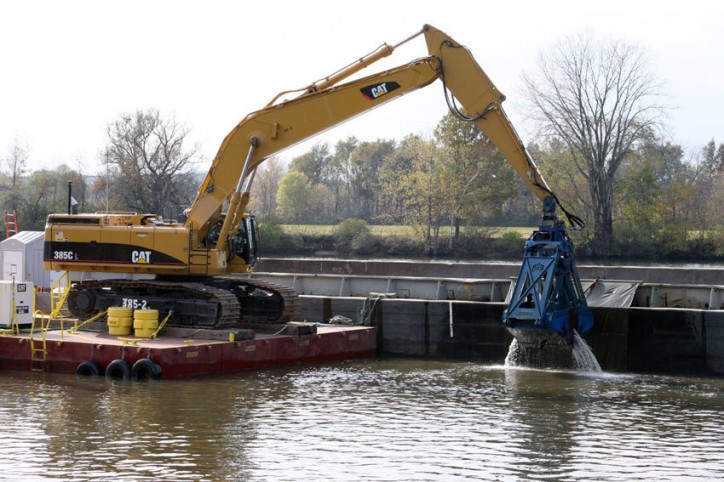General Electric has officially initiated the final sixth season of one of the biggest and most demanding environmental dredging projects to ever be carried out in the U.S.

Photo: EPA
At the end of this current year, the project will have amounted to the removal of roughly 3.3 million tons (2.9 million cubic yards) of dewatered sediment from the Upper Hudson River. The United States Environmental Protection Agency has labeled the project a success and has called it a national model.
GE is going to handle a 100% of the PCBs that are targeted by EPA over a 488-acre area of the river bottom that stretches 40 miles between Troy, N.Y. and Fort Edward.
General Electric has made investments in a total of approximately $1 billion for the development of the project all the while managing to meet each of its commitments towards EPA.
The company’s work on the Hudson is going to continue, even after completing the dredging process, focusing on the floodplains, the low-lying areas that are positioned along the shoreline between Troy and Fort Edward. According to the stipulations of an agreement between EPA and GE, the latter will carry out a study regarding the floodplains in order to determine where PCBs might be present and then formulate sufficient methods to deal with the issue.
General Electric will also continue conducting monitoring operations of the Upper Hudson’s environmental conditions on a regular basis as well as continue its major cleanup procedures at its Ford Edward and Hudson Falls plant sites.
The company’s dredging crew will be working all throughout the summer and fall, 24 hours per day, six days a week in order to remove approximately 250,000 cubic yards of sediment from the river area that stretches from Waterford, N.Y. to Northumberland. Additionally, they will also be removing sediments from another section of the river that is inaccessible via boat and has a total length of 2 miles. New York State Canal Corp., EPA, GE, property owners and local elected officials have been cooperating towards designing a creative land-based solution for carrying out the necessary procedures in the area.
The river is available for all recreational and commercial activities during the dredging process.